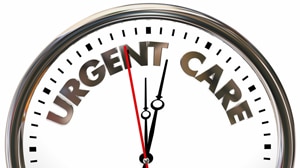
March 2, 2020
A Look At Urgent Care
By Michael D. Shaw
According to the American Academy of Urgent Care Medicine, “Urgent Care Medicine is the provision of immediate medical service offering outpatient care for the treatment of acute and chronic illness and injury. An urgent care center is a convenient option when someone’s regular physician is on vacation or unable to offer a timely appointment. Or, when illness strikes outside of regular office hours, urgent care offers an alternative to waiting for hours in a hospital Emergency Room.”
Mt. Sinai breaks down the difference between a medical emergency and an urgent medical condition. “Life-threatening emergencies, such as a heart attack or serious head injury, require a visit to the emergency department, also called the emergency room (ER). An illness or injury that does not appear to be life threatening but can’t wait until the next day should be treated at an urgent care center.”
Urgent care centers started in the 1970s, and were an upgrade to the walk-in clinics of the day. Urgent care centers generally have a physician present, and are better equipped. Currently, there are more than 10,000 urgent care centers in the US—most often treating cuts, burns, colds, flus, strains, sprains, bites, splinters, and rashes. Other services include physical exams, STD testing, and digital x-rays.
In 2018, Consumer Reports posted an article entitled “When You Should Go to an Urgent Care or Walk-in Health Clinic,” which includes an informative video.
Last year, the Washington Post did a 2,000-word story on urgent care clinics, focusing on Patient First founder R.P. Sowers. As an ER doc back in the 1970s, he made a simple observation: “I knew how long people were waiting in the emergency room. You were making them wait unnecessarily.”
Back then, most physicians looked down their noses at these “Doc in a box” facilities, much the same way as mainframe and minicomputer geeks laughed off PCs. Even when it was obvious that microcomputers were the wave of the future, it took Novell figuring out how to network PCs to finally silence the supercilious geeks. The cliché “Millennials ruin everything” might be overstating changing tastes. Still, as was noted by Tom Charland, chief executive of Merchant Medicine, “Millennials in particular see no reason they should have to wait for medical appointments and want medical care on demand—but they also want a steady medical relationship.
To be sure, there is something to be said about convenience. According to the annual Benchmarking Report from the Urgent Care Association (UCA), almost 97% of urgent care patient encounters lasted one hour or less. Try to match that at your local doctor’s office or ER. And while we’re at it, for people with the same diagnosis, treatment costs about ten times more in the ER (an average of about $2,200) than in an urgent care center (about $168). Notably, these lower costs make urgent care centers favored providers for many insurance companies.
UCA’s Benchmarking Report also touts the increasing use of telemedicine in these facilities. 30% of respondents who are not currently offering telemedicine services intend to do so within six to twelve months. Telemedicine promises to increase access for patients across the country, particularly in underserved communities.
Laurel Stoimenoff, PT, CHC, CEO of UCA, says that urgent care clinics handle about 89 million patient visits each year, which includes more than 29% of all primary care visits in the US, and nearly 15% of all outpatient physician visits.
I’ve often said that to see what is truly essential in healthcare, just visit a hospital at 4 o’clock on a Sunday morning. Whoever is there at that time, and whatever activities are going on, will define “essential.” Even during prime hours on a weekday, urgent care clinics come pretty close to this standard.
